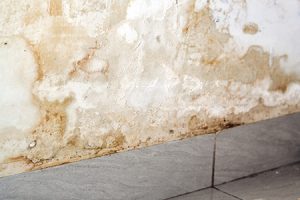How to Help Prevent Water Damage in Your Bathroom
How to Help Prevent Water Damage in Your Bathroom
Blog Article
What're your opinions about Preventing Water Damage in the Bathroom?

The restroom is incredibly susceptible for moist buildup and also possible water damage due to the frequent use water in it. This write-up uses easy evaluation techniques to aid finding water damages risks.
The frequent use water in the restroom makes it extremely at risk for wet buildup as well as prospective water damage. By inspecting it regularly, you can decrease water related damages.
The adhering to collection of assessments is easy to perform and also must be done when in every three months in order to keep your washroom healthy as well as to prevent possible water problems triggered by the bathtub, the shower, pipeline joints as well as plumbing, sinks, cabinets, and also the commode
Do not overlook performing these examinations and also be extensive while performing them. Remember that these basic evaluations can conserve you a lot of money by offering very early indicators for water damages
Sinks as well as Cabinets
Sinks and also cupboards are revealed to wetness and also humidity day-to-day as well as are usually neglected. Evaluate frequently under the sink and also on the countertop over it. Repair any type of drip in the catch as it might suggest drain troubles. Take a look around the sink, slow-moving draining pipes might show a blocked drainpipe. Replace sink seals if they are broken or loosened.
Bathtub as well as Shower
The shower and tub call for special interest and also maintenance. Inspect the floor tiles and replace if fractured. Make sure that there is no missing out on cement between the ceramic tiles. Evaluate and replace broken caulking at joints where the wall surfaces meet the floor or the tub. Blocked drains pipes and also pipes issues will certainly prevent the bathtub from drying out and also might indicate severe troubles beneath the bathtub. Talk to a specialist immediately to prevent structural damages. Take notice of discolorations or soft areas around the tub wall surfaces as they might show an internal leak.
Plumbing
Signs for water damage are difficult to find given that most pipes are set up inside the wall surfaces.
Pay unique focus to floor covering and also walls moisture and spots as they may suggest an undetectable plumbing trouble. Examine dampness degrees in adjoining rooms as well.
The Toilet
The toilet is a susceptible water junction. Inspect the water lines as well as search for leaks around the bathroom seat, in the pipe, as well as under the water storage tank. If you find any kind of indicators of dampness on the flooring around the commode, look for leakages in the toilet edge as well as storage tank seals.
Know that hanging bathroom bowl antiperspirants increases the chances for clogs.
Water Damage Signs In The Bathroom To Avoid Cleanup
Musty smell
This is one of the easiest signs to catch because musty smells are so odorous. The damp, earthy, moldy smell should be a big red flag. The smell will develop when moisture gets trapped in surfaces, and begins to facilitate mold growth. Leaking pipes under cabinets, inside walls, and behind shower fixtures will cause moisture to stay trapped and not dry, which will lead to mold growth and spread. As soon as you notice any musty smells in your bathroom, have it checked for hidden water damage and cleanup signs.
Visible mold
If the smell isn’t there to give it away, sometimes you will actually see mold growth. Finding mold in your bathroom is a serious problem, because mold is very harmful to your health. By the time mold growth is visible, it also means that water damage has already occurred and been present for some time. The only way the mold problem can be resolved is to find the source of the moisture and get it stopped. To safely and adequately remove mold, you need to have professionals handle the remediation. Do not waste any time in getting mold problems addressed, fixed, and sanitized so that you can protect you and your family from the many respiratory symptoms caused by mold exposure.
Damaged floors
Bathroom floors should be able to withstand some exposure to water while still remaining in good condition. However, when excess exposure or water leaks occur, they will begin to damage even the most water-resistant flooring. If you notice any cracking, bubbling, staining, or warping on your bathroom floors, there is probably a water leak somewhere causing the distortion. If you notice areas of the floor have become softer, or even have a spongy feeling, there is probably damage to the subfloor. Subflooring is typically made up of plywood. When plywood is exposed to water or moisture, it will absorb it. Once it has become saturated, the weight of the excess water will cause the wood to swell and soften. Check the floors in your bathroom frequently to catch any of these sings before they lead to damaged subflooring.
Changes on walls
When water leaks behind walls, it will cause changes in the drywall. Peeling plaster, blistering paint, and soggy wallpaper are all good indicators that excess water is building up behind the wall. Water leaking behind drywall will cause it to swell and be soft to the tough. If you start to notice gaps along the trim of your walls, or where tile meets the wall, it could also be a strong indicator that there is a leak behind the wall. Any changes, distortion, or damage on the walls should be evaluated as soon as you notice it to prevent further water damage and cleanup.

As a fervent reader about How to Fix a Water Damage Bathroom, I thought sharing that excerpt was smart. Sharing is good. Helping others is fun. Thank you so much for going through it.
Book My Estimate Report this page